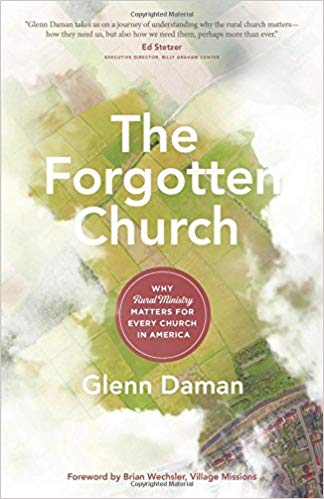A Brief Book Summary from Books at a Glance
By Joshua Keith Smith
Overview
In the Forgotten Church, Glenn Daman addresses the lacuna of pastoral and academic works dedicated to the improvement and betterment of the small rural churches of North America. Daman advocates for the mutual benefit that urban and rural enjoy when both learn from one another, realizing that each is called to reclaim the glory of the local church. Since the majority of pastors will serve congregations under 250, Daman’s book will serve as both an encouragement and a clarification of how small and rural churches should function as a necessary part of the body of Christ.
Author
Glenn C. Daman (Trinity Evangelical Divinity School) serves as the pastor of Christian Church in Stevenson, Washington. He also serves as one of the directors of Village Missions Center for Leadership Development (equips missionaries in rural places). His other works include When Shepherds Weep and Shepherding the Small Church.
Table of Contents
Seeing as Christ Sees
- The Forgotten Ministry
- The Misunderstood Ministry
- Rural Life: A Historical Perspective
- The Rural Church: A Historical Perspective
- Understanding Rural Culture
- The Rural Ghetto: Poverty in Rural America
- Racial Tension in Rural America
- The Church and the Rural Community
- Developing a Theology of Rural Ministry
- The Contribution of Rural Ministry
- Developing Strategic Partnerships
- The Rural Community as a Mission Field
- The Future of Rural Ministry
Book Summary
Chapter One: The Forgotten Ministry
The opening chapter of Forgotten Church frames the message of the entire book through recalling the story of Jack Higgins––a Presbyterian pastor sent to rural Barnum, Minnesota. Daman captures the often-typical disenchantment associated with the calling to rural pastor places by showing Higgins disdain for his election (c. 1895). In essence, Higgins was called to pastor a non-typical congregation made up of lumberjacks. The reader must keep in mind that these are not just some rural-farmer types, but rugged and hardened men who did not take kindly to a young man from an urban environment, especially a young pastor. However, through some exciting exchanges, Higgins won the favor of the men, and his ministry began to grow. It grew so much that Higgins recruited Richard (Dick) Ferrell (1855–1956) to assist him in this ministry. In 1914, Ferrell was elected to go to another logging community in Northern Idaho, Eastern Washington, and Western Montana. Because of the faithful service of both Higgins and Ferrell, the local ministry that the author (Daman) currently serves with exist to this day.
Tragically, the ministry of men like Higgins and Ferrell to rural places has been forfeited for the calling and attraction of urban environments. Daman boldly states that “the rural church does not make headlines, and rural pastors are not asked to speak at conferences.” Not only is the rural church on the margin of society but also it is on the periphery of focus of Christian authors, speakers, and seminary professors.
Chapter Two: The Misunderstood Ministry
Chapter two focuses on the definition of rural America and how lack of clarity about said descriptions have led to much confusion about rural ministry. In the realm of demographics, that is according to federal governmental agencies, most definitions concern what is outside of what is considered an urban or metropolitan area (counties with 50,000 or more). More specifically, urban or rural regions considered non-metropolitan regions with less than 2,500 that make up the non-urban fringe. While there are other ways of dividing and parsing the numbers and demographics of populations down (i.e., micropolitan, Nonmetropolitan, etc.), the numbers are not the only factor that helps the local church understand what it means to minister in rural places.
[To continue reading this summary, please see below....]The remainder of this article is premium content. Become a member to continue reading.
Already have an account? Sign In
